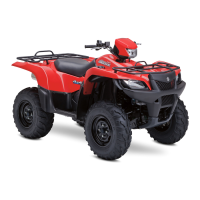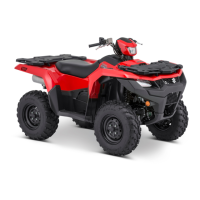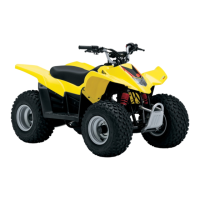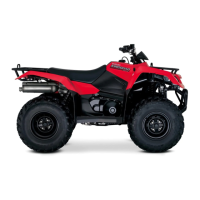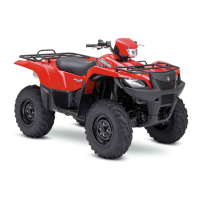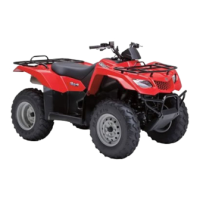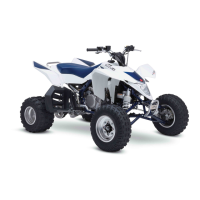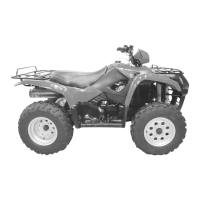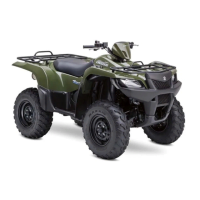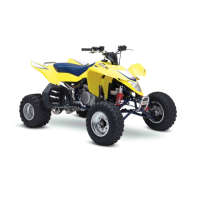6-6 COOLING SYSTEM
RADIATOR, COOLING FAN, AND
ENGINE
COOLANT
RESERVOIR
INSPECTION
RADIATOR
Before removing the radiator and draining the engine coolant,
check
the following.
Check
the cooling system for leaks
with
a
radiator tester
©.
Remove
the radiator cap and connect the radiator tester to the
filler.
Pressurize
the
cooling system
(120 kPa (1.2
kgf/cm
2
,
17 psi)) and check
if
it holds the specified pressure for
10
sec-
onds. If the pressure decreases, check the entire cooling system
for
leaks. If
a
leak is found, replace the defective part.
A
WARNING
* Do not open the radiator cap when the engine is
hot, as you may be injured by
escaping
hot liquid or
vapor.
* When removing the radiator cap tester, put a rag on
the filler to prevent the engine coolant
from
spray-
ing out.
A CAUTION
Do not exceed the radiator cap release pressure, or
the radiator cap, and subsequently the radiator, can
be damaged.
Check
the radiator cap (?) using
a
radiator tester
©.
Attach
the radiator tester to the radiator cap
as
shown. Slowly
apply pressure
to
the radiator cap;
do
not exceed 110
±
0.15
kPa(1.1
±
0.15 kgf/cm
2
, 15.6 ±2.1 psi). If the radiator cap
does
not
hold the pressure for at least 10 seconds, replace it.
Radiator cap release
pressure:
110 ± 15 kPa
(1.1 ± 0.15 kgf/cm
2
,15.6 ± 2.1 psi)
Check
the radiator for
dirt
and other foreign materials. If any are
found, clean the radiator using compressed air. Also, repair any
bent or dented fins using
a
small screwdriver.
Check
all the water
hoses
for cracks,
flat
spots,
or
loose con-
nections.
Replace
any
damaged
hoses
and
properly tighten
any loose connections.
Ml If l!%
%
**; U
**Y
1?
^
¥t
%•
^^^^•-^V^^P
8 44 ft ^
mm
Hi
fill
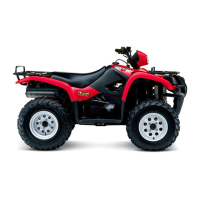
